Offsite in Sonoma
Quadcopters. Meeting my new boss. Seeing the grand promise. Banjos and guitars and ukuleles. Change and change and change.
May 15, 2014 — My first time crossing the Golden Gate Bridge and seeing it up close was on a bus to a retreat in the town of Sonoma, two hours north of San Francisco. With me on the bus, seated sparsely among the ~50 seats, was the whole of Slack’s global workforce. That was our scale at the time, somewhere around 30 souls.
We assembled in Sonoma for an offsite. Even at that fledgling stage Slack already employed people from all over the literal map, working full time on the company from Canada, New York, the UK, Michigan. An offsite gave all those far flung folks a chance to come together in person.
For all its dedication to connectivity and asymmetric communication, Slack still as a practice relied heavily on in-person, face-to-face time to create relationships, build trust and make big decisions.
Many of us had never met each other. And since this was my first offsite, I had to orient myself a bit to the situation. I had questions travelling with me on that bus crossing the Golden Gate.
First, what the heck was an offsite? As near as I could tell it combined a reward with a purpose. The reward felt like a nice acknowledgment for the hard work we’d done and the success we’d started to have with our paid product launch. Real customers were choosing to pay to use our product. Huzzah!
The purpose felt like two parts: partially to introduce most of the folks to each other, since we mostly didn’t know each other, and partially to take the temperature of our current state of Slack (where are we?) and plot an outline for the near future (where are we headed?). Those were big questions.
Meet the new boss
Second on my list of questions was who was Allen? Oh, have I mentioned Allen? Right, well, in the rush to launch our product and ramp up our capabilities and actually close deals that came in the door because of the incredible interest in our product, I’d also gotten a new boss: Allen Shim, our new Chief Financial Officer (CFO).
Stewart had tossed that change out to me one day: you’re going to have a new boss. I’m too busy. Then I had an introductory call with Allen. All seemed sound. And the funny thing I found about having a new boss in a startup of fewer than 50 people is that there’s often very little day-to-day management needed.
Conversations with Allen were almost entirely about prioritization on a daily / weekly cadence (am I working on the right things in the right order right now?), and then huge picture conversations occasionally (where is our team going? where will we break down? who do we need to add next and how do we need to reinvent how we’re doing things?).
Every day there’s so much to do and everyone just has to roll up their sleeves and get on with the most important work, and communicate to others about the work that’s not getting done. I found there was always lots of both kinds of work because we were lucky enough to have customers and a growing product. Each day felt like a chance to get tons done and leave tons left undone. We had to stay sane and check out at some point and also acknowledge that it all can’t get done.
I rode the bus over the Golden Gate Bridge seated next to Allen and it was our first time meeting in person. We talked about our respective careers, recapping how we each landed in the situation we found ourselves in. We talked about the different parts of our current work we respectively were trying to figure out.
Allen had great questions about our sales efficiency that I had never thought to consider, basically because no one had asked me and I’d never really done sales. How much time did we spend on each customer? What size were the customers? How long did it take to close a customer? Were we getting partial or full adoption of the product across the customer organization?
Whoa: Good questions, all of them! But I had very few answers to offer. We had launched our paid product only 3 months beforehand. We had limited numbers to work from. We had a limited time scale to learn from. I was a limited first sales person.
Allen asked the right questions for a CFO to be asking. I could see his mind working. I wanted to have better answers for him and for his way of thinking about the business from a distance, as a model abstracted away from the specifics of each customer, each conversation and deal’s details.
But I didn’t, yet. I gave him what I had and tried to think out loud about how we might get better insights.
Quadcopter Views
Third on my list of questions was who were these folks I worked with at Slack? Longer term, perhaps this is the most important question and should have been my first question. Who were the rest of these folks I worked with?
In Vancouver, I had about 5 co-workers. Globally, I had about 25 more. In both contexts, I was the only person in Accounts. Everyone else was in Customer Support, Engineering, Infrastructure, Design. I was a department of one. It felt like the biggest opportunity I could find on the trip was to meet my co-workers and learn about them and their jobs to better work with them. (And no, we never called each other ‘Slackers’.)
We arrived in Sonoma, checked in and split up into our respective rooms to get settled. Many of the team had worked together on Glitch the Game, so the offsite offered a chance to rekindle past relationships. I think they’d even had a prior offsite at this location. This was all new to me.
Ben Jenkins, who lived up in Michigan and led our technical Customer Support function, set up his quadcopter drone in the hotel front yard. The drone had a bracket that held a cell phone and shot incredibly clear video, relayed to a screen he held in his hands. Ben walked away from the copter on the grass and it started buzzing. It lifted away as we watched.
The screen Ben held in his hand showed the camera’s view, zooming out to reveal a group of us standing in a circle with our hands in our pockets, gazing up. The copter lifted and we shrank to the background. The field where we stood grew larger. The hotel building came into view, the driveway, the roofs. The landscaping shrunk and mashed us back further. A disused water tower joined the frame from one side as the world zoomed away. We were living on the ground and specks in the perspective.
We hit the pool and there was the CEO himself, frolicking in the water. It felt a bit disarming, seeing Stewart in his trunks, a sight I’d never thought to imagine. He was just a pale computer nerd like the rest of us. We cannonballed in. Banjos and ukeleles and guitars came out for a musical hour that evening. We took photos in the stairwell, cramming the ~25 or so Slack employees into the frame.
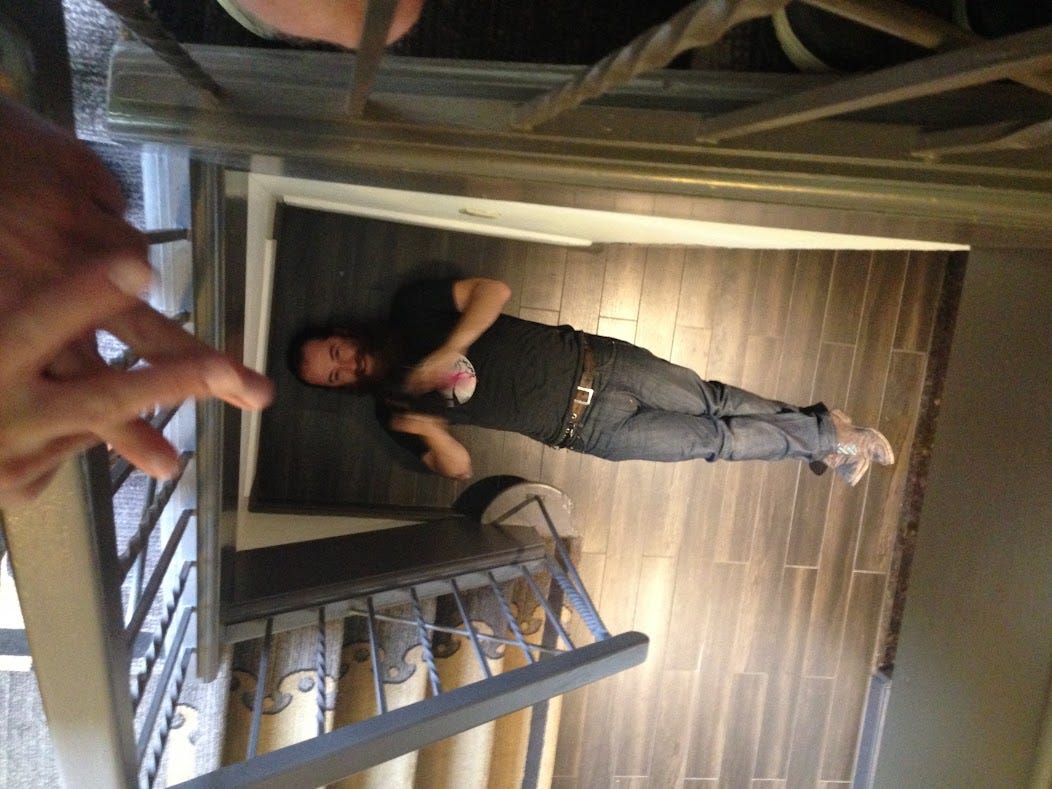
Some teams had set up meetings for themselves, so folks drifted in and out of the communal areas. We had dinner together as a group in a garden beside the pool and I tried to get to know folks and what they did.
I sat with Ali Rayl who ran our Customer Support team. Like everyone else I met she presented a striking mix of no-nonsense smarts and casual capability. And like everyone else she also struck me as also well read and broadly interested in the world. We talked about the food. We talked about politics in San Francisco and the history of Sonoma. She was from Colorado so we talked about the monumental, rearing, fire-eyed horse at the Denver airport.
Change and change and change
Over the whole offsite I had a feeling of watching it all, not really knowing my role in the proceedings but wanting to contribute where I could without being overbearing. There must have been an agenda. We certainly attended meetings with projectors in repurposed hotel ballrooms. I just didn’t want to be the sales guy with something to say about everything.
So what did we talk about?
As far as my notes tell me, the topics mostly focused on Slack, the product and its evolution, and not the company, which makes sense because that was the role and interest of most of the people attending. We talked about the first hints of a new paid version of Slack emerging to address customers needs and offer more features for larger organizations at a higher price. I got asked to represent our customers’ perspective on some new feature ideas and on that new higher-priced tier of Slack.
If the whole purpose of the offsite was to give us a few days to step outside the wind tunnel of our work, then I’d say it succeeded. We relaxed. We ate together. We visited a winery and had dinner at a long table in its underground cellar.
But could we also feel the change happening at the time? The approaching tidal wave bearing down on us? We started as a small, obscure tech company scrabbled together from the wreckage of a video game company. No one knew us so we had no risk to contend with. Now where were we headed? Somewhere different from our low-key present, certainly. People knew us now, even though those people still mostly lived in a small circle of tech nerdery.
Some of the larger promise of Slack must have existed at this time to an attuned group of insiders and keen outside observers. Our aspiration had started to become lightly real. We could be the connective tissue for software engineers the world over. An essential tool in their toolkit and the one they spent the most time with every day, replacing email for them. That seemed like a big, audacious and intimidating goal in itself.
And it felt very much like we had to hold two different, complimentary but time-bounded ideas of the future in our head at once. The first idea led straight to the specific thing that we had to get done today, this week, this month. The thing right in front of our nose. We had to immerse ourselves and devote our effort and focus to that small group of tasks that led to succeeding with our jobs in the team, and we had to almost entirely ignore anything else.
The second idea led straight to dreaming on such a large scale that spending too long on it led to a sense of vertigo for me. Our product could be on every computer in the world and could replace email for work for everyone. Our product could be on every knowledge worker’s smartphone in the world to keep them connected to their workflows, teammates and tasks.

We had a diffuse sense that big things and big changes were coming. They were in the air. But really, as I’ve found myself saying many times in this project, we knew nothing at the time. It felt like we were a team that would never again be together at that small size. And that could be because we could fail in 6 months, or we could take over the world.
And adding to that sense of unknowingness, less than a month before the offsite we had announced new fundraising of $42.75-million at a $250-million valuation. Folks wanted to bet on Slack (and by extension us) to take over the world.
The future felt like a consistent heartbeat of change and change and change all driven by growth. More people, more customers, bigger rounds of fundraising. That was the path that awaited us. That was the path we had signed up to follow. Nothing except our own capacity to work and hire more people to work and our own capacity to conceive of a meaningful plan constrained us. And time. We never had enough.
What could we do with the aspirations and promise ahead of us? We didn’t know. We had ideas and gumption and we wanted to find out. Fast.
Up next:
Pricing and “Fair Billing Policy”
By the middle of 2014, as we saw the numbers continue to roll up, as we watched the growth rate continue hovering at around 5% week-over-week, we thought we knew one big thing: once a team started using Slack, short of going out of business, they never stopped. 🚀🚀🚀


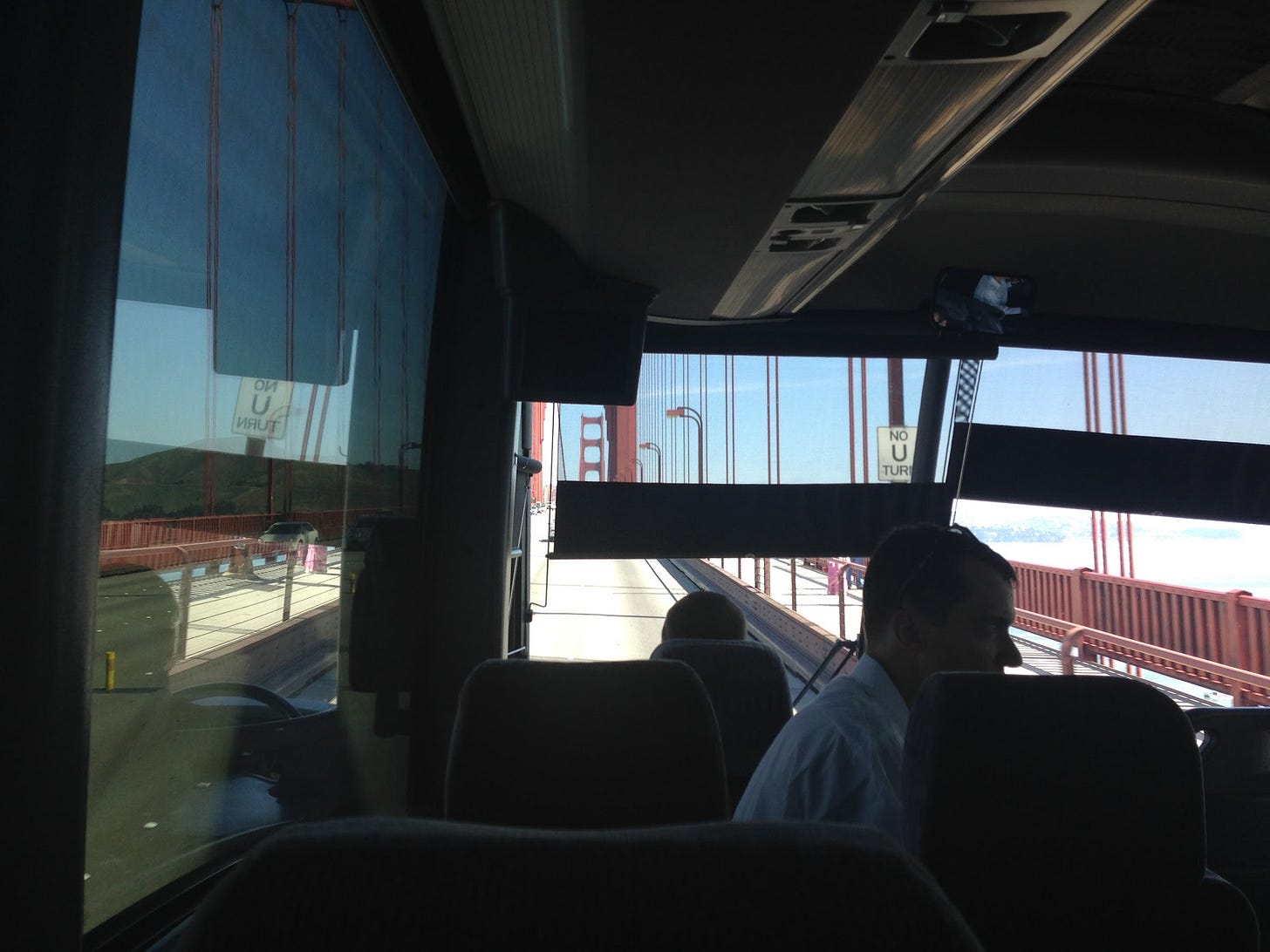
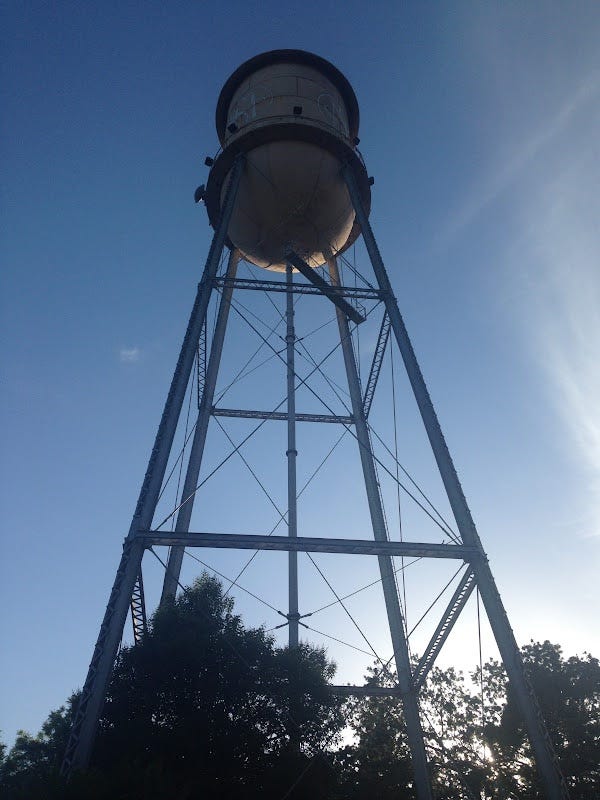
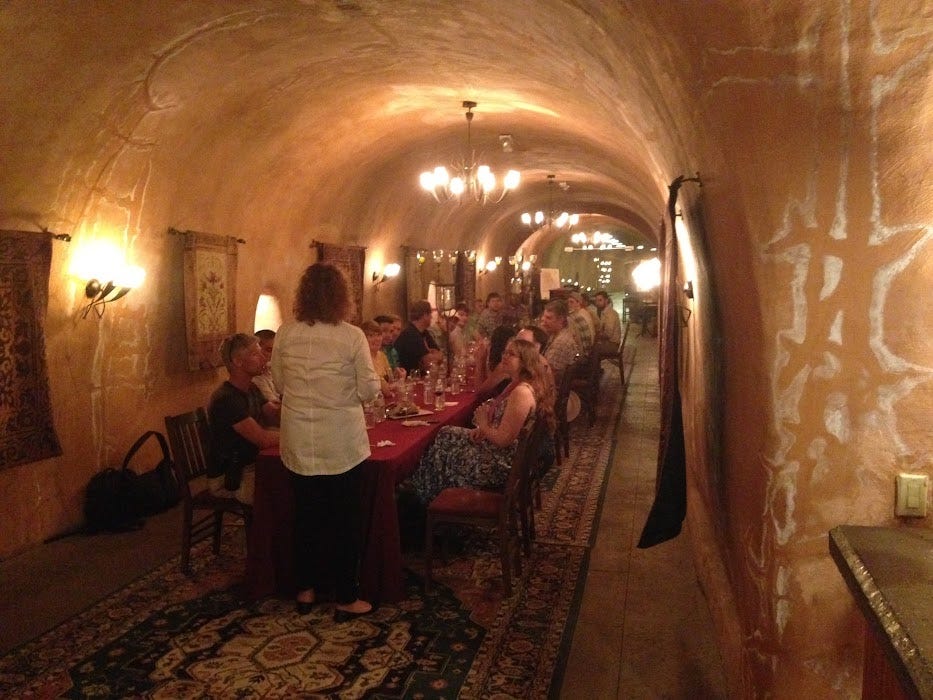

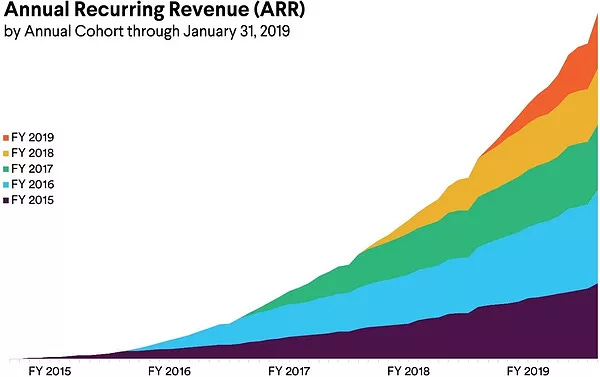
My favorite part of the chapter today is the drone - zooming out and zooming out and out, it feels like a metaphor for what you are able to do now, to see it all with a different lens.